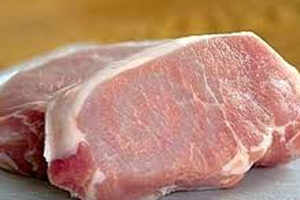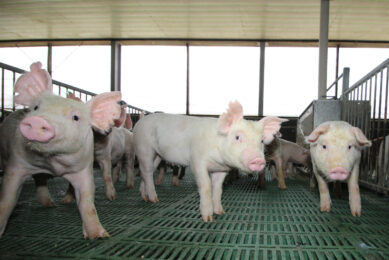USMEF: Pork exports down slightly

Pork exports dipped 3% in volume and 3.6% in value and US beef moved 3% higher in volume in May, and a healthy 9% in value, according to statistics released by USDA and compiled by the US Meat Export Federation (USMEF).
The inability of the United States to ship beef and pork to Russia continues to put a damper on US red meat exports this year. Excluding Russia, beef export volume for May increased 12% and export volume for the first five months of 2013 rose 3.5% instead of falling 3%.
Similarly, May pork exports increased 3.5% in volume over last year’s totals if Russia is excluded. For January through May 2013, export volume would be down 5.8% instead of 9% if Russia is not included. An oversupply of domestic pork in many major export markets continues to pose a challenge to U.S. exports.
“The loss of a key market like Russia ripples through the red meat industry,” said US Meat Export Federation President and CEO Philip Seng. “The absence of one of the largest meat purchasers in the world affects the volume of product sold and, more importantly, the price that other customers need to pay for it in a competitive marketplace.”
Summary of May pork results
Total pork exports in May improved over 2013 trends but still dipped 3.3% to 180,637 metric tons valued at $505.4 million, a 3.6% decline from last year. They accounted for 23% of muscle cut production and 26.4%of muscle cuts plus variety meat, similar to last May.
For the first five months of the year, exports were down 9% to 882,905 metric tons valued at $2.47 billion, down 8%.
The value of pork exports in May equated to $54.85 per head of fed slaughter, down from $56.47 last year. The year-to-date export value averaged $53.14 per head, down from $58.36 last year.
May pork exports were led by another strong month for Mexico (52,295 metric tons, +11%) and steady year-over-year volumes to Japan (37,108 metric tons). Exports also were larger for Central/South America (10,008 metric tons, +58%, led by growth to Colombia, Chile and Honduras), ASEAN (5,313 metric tons, +61% on larger volumes to the Philippines), Caribbean (4,210 metric tons, +85% with larger exports to the Dominican Republic, Bahamas, and Trinidad and Tobago) and Taiwan (2,688 metric tons, +142%).
“The volume of US pork that Mexico consumes is essential for our industry, and that is why we have focused resources on driving up per-capita pork consumption there,” Seng explained. “On the other hand, Japan is the leading value market for pork exports, and there we are concentrated on higher value branded and chilled products.”
Pork exports to Russia in May fell from 12,250 metric tons last year to zero this year. For the year, exports to Russia are down 84 % in volume and value (from 37,075 metric tons to 5,770 metric tons and from $109.5 million to $17.9 million).
May pork exports to Canada were down 3% to 19,093 metric tons but remained up 3% for January through May. Exports to the China/Hong Kong region dipped 9 % in May to 34,543 metric tons, but were larger than the previous two months. South Korea (8,645 metric tons, -19 %) and Australia/New Zealand (4,251 metric tons, -28%) also were down in May.
Through May, Mexico was the largest volume destination for US pork but Japan was No. 1 in value. China, Canada, South Korea, Hong Kong, Australia and the Philippines rounded out the top eight countries in volume, with the same markets leading for value: Japan, Mexico, Canada, China, Korea, Australia, Hong Kong and the Philippines. Canada and the Philippines were the only top markets that saw export growth in the first five months of the year, but exports were robust to many of the smaller markets. Larger domestic supplies and market access issues have created a challenging atmosphere for U.S. pork exports thus far this year but exports showed positive signs of growth in May.
** For info and complete export results for US beef, pork and lamb are available online at USMEF.











